A small sample of the many new history book titles arriving at the library soon
Bonanza King: John Mackay and the Battle over the Greatest Riches in the American West by Gregory Crouch
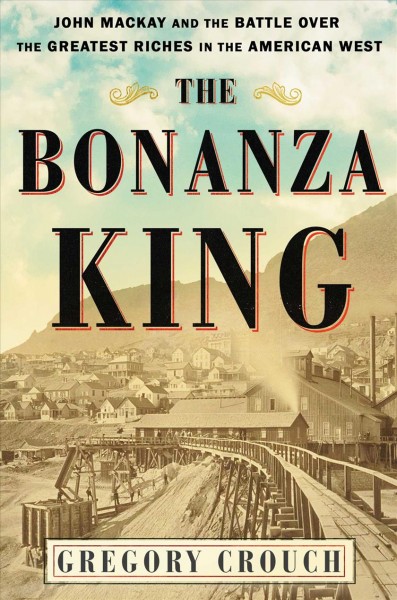
Born in 1831, John W. Mackay was a penniless Irish immigrant who came of age in New York City, went to California during the Gold Rush, and mined without much luck for eight years. When he heard of riches found on the other side of the Sierra Nevada Mountains in 1859, Mackay abandoned his claim and walked a hundred miles to the Comstock Lode in Nevada.
Over the course of the next dozen years, Mackay worked his way up from nothing, thwarting the pernicious “Bank Ring” monopoly to seize control of the most concentrated cache of precious metals ever found on earth, the legendary “Big Bonanza,” a stupendously rich body of gold and silver ore discovered 1,500 feet beneath the streets of Virginia City, the ultimate Old West boomtown. But for the ore to be worth anything it had to be found, claimed, and successfully extracted, each step requiring enormous risk and the creation of an entirely new industry.
Now Gregory Crouch tells Mackay’s amazing story—how he extracted the ore from deep underground and used his vast mining fortune to crush the transatlantic telegraph monopoly of the notorious Jay Gould. When Mackay died in 1902, front-page obituaries in Europe and the United States hailed him as one of the most admired Americans of the age. Featuring great period photographs and maps, The Bonanza King is a dazzling tour de force, a riveting history of Virginia City, Nevada, the Comstock Lode, and America itself.
Billionaire Raj: A Journey through India’s New Gilded Age by James Crabtree
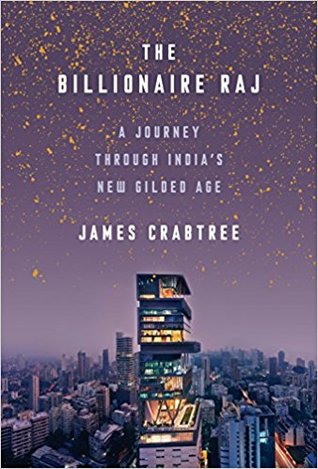 A colorful and revealing portrait of the rise of India’s new billionaire class in a radically unequal society
A colorful and revealing portrait of the rise of India’s new billionaire class in a radically unequal society
India is the world’s largest democracy, with more than one billion people and an economy expanding faster than China’s. But the rewards of this growth have been far from evenly shared, and the country’s top 1% now own nearly 60% of its wealth. In megacities like Mumbai, where half the population live in slums, the extraordinary riches of India’s new dynasties echo the Vanderbilts and Rockefellers of yesterday, funneling profits from huge conglomerates into lifestyles of conspicuous consumption.
James Crabtree’s The Billionaire Raj takes readers on a personal journey to meet these reclusive billionaires, fugitive tycoons, and shadowy political power brokers. From the sky terrace of the world’s most expensive home to impoverished villages and mass political rallies, Crabtree dramatizes the battle between crony capitalists and economic reformers, revealing a tense struggle between equality and privilege playing out against a combustible backdrop of aspiration, class, and caste.
The Billionaire Raj is a vivid account of a divided society on the cusp of transformation–and a struggle that will shape not just India’s future, but the world’s.
Fly Girls: How Five Daring Women Defied All Odds and Made Aviation History by Keith O’Brien
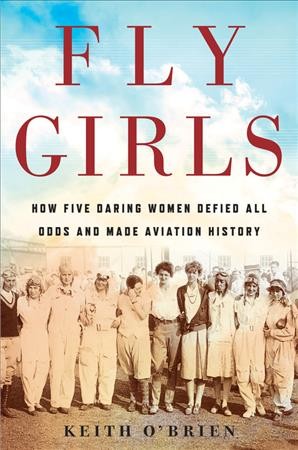 The untold story of five women who fought to compete against men in the high-stakes national air races of the 1920s and 1930s — and won
The untold story of five women who fought to compete against men in the high-stakes national air races of the 1920s and 1930s — and won
Between the world wars, no sport was more popular, or more dangerous, than airplane racing. Thousands of fans flocked to multi‑day events, and cities vied with one another to host them. The pilots themselves were hailed as dashing heroes who cheerfully stared death in the face. Well, the men were hailed. Female pilots were more often ridiculed than praised for what the press portrayed as silly efforts to horn in on a manly, and deadly, pursuit. Fly Girls recounts how a cadre of women banded together to break the original glass ceiling: the entrenched prejudice that conspired to keep them out of the sky.
O’Brien weaves together the stories of five remarkable women: Florence Klingensmith, a high‑school dropout who worked for a dry cleaner in Fargo, North Dakota; Ruth Elder, an Alabama divorcee; Amelia Earhart, the most famous, but not necessarily the most skilled; Ruth Nichols, who chafed at the constraints of her blue‑blood family’s expectations; and Louise Thaden, the mother of two young kids who got her start selling coal in Wichita. Together, they fought for the chance to race against the men — and in 1936 one of them would triumph in the toughest race of all.
Like Hidden Figures and Girls of Atomic City, Fly Girls celebrates a little-known slice of history wherein tenacious, trail-blazing women braved all obstacles to achieve greatness.
Last Englishmen: Love, War and the End of Empire by Deborah Baker
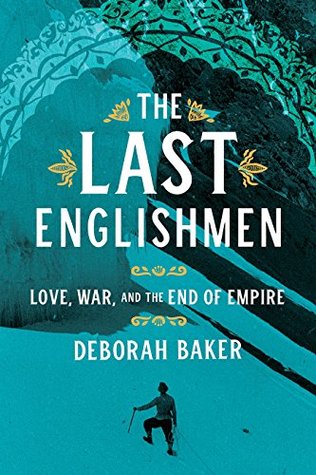 A sumptuous biographical saga, both intimate and epic, about the waning of the British Empire in India
A sumptuous biographical saga, both intimate and epic, about the waning of the British Empire in India
John Auden was a pioneering geologist of the Himalayas. Michael Spender was the first to survey the northern approach to the summit of Mount Everest. While their younger brothers—W. H. Auden and Stephen Spender—achieved literary fame, they vied to be included on an expedition that would deliver Everest’s summit to an Englishman, a quest that had become a metaphor for Britain’s struggle to maintain power over India. To this rivalry was added another: In the summer of 1938 both men fell in love with a painter named Nancy Sharp. Her choice would determine where each man’s wartime loyalties would lie.
Set in Calcutta, London, the glacier-locked wilds of the Karakoram, and on Everest itself, The Last Englishman is also the story of a generation. The cast of this exhilarating drama includes Indian and English writers and artists, explorers and Communist spies, Die Hards and Indian nationalists, political rogues and police informers. Key among them is a highborn Bengali poet named Sudhin Datta, a melancholy soul torn, like many of his generation, between hatred of the British Empire and a deep love of European literature, whose life would be upended by the arrival of war on his Calcutta doorstep.
Dense with romance and intrigue, and of startling relevance for the great power games of our own day, Deborah Baker’s The Last Englishman is an engrossing story that traces the end of empire and the stirring of a new world order.
Before and After Alexander: The Legend and Legacy of Alexander the Great by Richard Billows
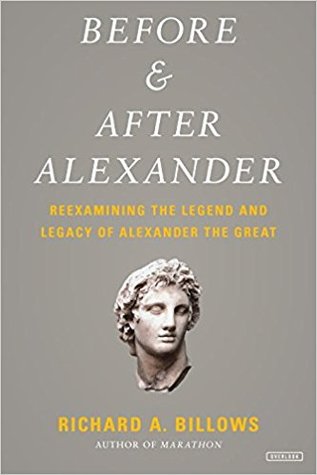 In the arc of western history, Ancient Greece is at the apex, owing to its grandeur, its culture, and an intellectual renaissance to rival that of Europe. So important is Greece to history that figures such as Plato and Socrates are still household names, and the works of Homer are regularly adapted into movies. The most important hero of all, though, is Alexander the Great, who was not fictional in the least.
In the arc of western history, Ancient Greece is at the apex, owing to its grandeur, its culture, and an intellectual renaissance to rival that of Europe. So important is Greece to history that figures such as Plato and Socrates are still household names, and the works of Homer are regularly adapted into movies. The most important hero of all, though, is Alexander the Great, who was not fictional in the least.
While many historians have studied Alexander’s achievements at length, author and professor Richard A. Billows delves deeper into the obscure periods of Alexander’s life before and after his reign. In his definitive biography Before and After Alexander, Billows explores the lesser-known years of Alexander, who, without the foundation laid by his father, Philip II of Macedon, would not have had the resources or influence to develop one of the greatest empires in history.
The years following his death were even more momentous. Alexander’s unexpected demise at the age of thirty-three created such a power vacuum that it incited decades of conflict among his generals, ultimately leading to the decline of Hellenistic civilization and the rise of the Roman Empire.
Empress: The Astonishing Reign of Nur Jahan by Ruby Lal
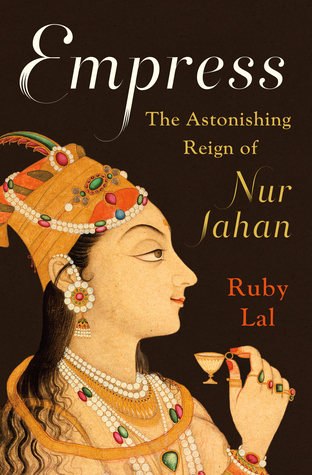 When it came to hunting, she was a master shot. As a dress designer, few could compare. An ingenious architect, she innovated the use of marble in her parents’ mausoleum on the banks of the Yamuna River that inspired her stepson’s Taj Mahal. And she was both celebrated and reviled for her political acumen and diplomatic skill, which rivaled those of her female counterparts in Europe and beyond.
When it came to hunting, she was a master shot. As a dress designer, few could compare. An ingenious architect, she innovated the use of marble in her parents’ mausoleum on the banks of the Yamuna River that inspired her stepson’s Taj Mahal. And she was both celebrated and reviled for her political acumen and diplomatic skill, which rivaled those of her female counterparts in Europe and beyond.
In 1611, thirty-four-year-old Nur Jahan, daughter of a Persian noble and widow of a subversive official, became the twentieth and most cherished wife of the Emperor Jahangir. While other wives were secluded behind walls, Nur ruled the vast Mughal Empire alongside her husband, and governed in his stead as his health failed and his attentions wandered from matters of state. An astute politician and devoted partner, Nur led troops into battle to free Jahangir when he was imprisoned by one of his own officers. She signed and issued imperial orders, and coins of the realm bore her name.
Acclaimed historian Ruby Lal uncovers the rich life and world of Nur Jahan, rescuing this dazzling figure from patriarchal and Orientalist clichés of romance and intrigue, and giving new insight into the lives of women and girls in the Mughal Empire, even where scholars claim there are no sources. Nur’s confident assertion of authority and talent is revelatory. In Empress, she finally receives her due in a deeply researched and evocative biography that awakens us to a fascinating history.
